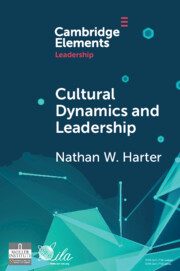Element contents
Cultural Dynamics and Leadership
Published online by Cambridge University Press: 19 May 2022
Summary
- Type
- Element
- Information
- Series: Elements in LeadershipOnline ISBN: 9781009002066Publisher: Cambridge University PressPrint publication: 19 May 2022
References
- 5
- Cited by



